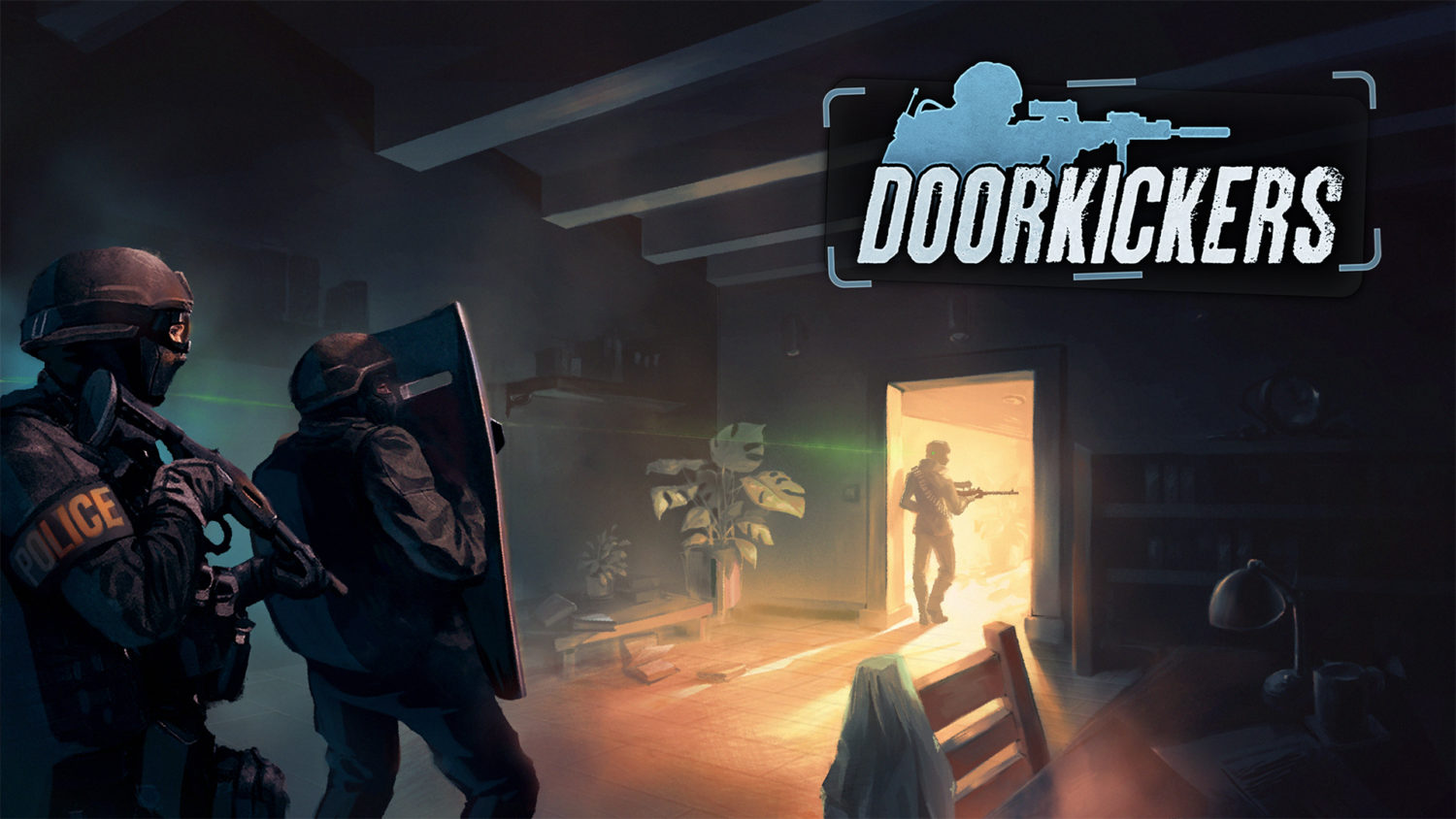Door Kickers is an action-strategy game for the Nintendo Switch. You control a S.W.A.T. team working its way through missions to take down the bad guys and rescue hostages. It’s a complex game that requires some strategic thinking and planning.
The game is played from a top-down perspective. Each scenario gives you a chance to plan a route through a single-screen layout. There’s usually a building with multiple rooms to explore; sometimes it might be an outdoor setting like a car park. Wherever you find yourself, the place is generally littered with gun-toting terrorists, along with the occasional bomb to diffuse and hostages to rescue.

Missions are broken into three phases: deployment, planning and execution. You can choose which troops to bring along from your squad. Sometimes you’ll only have two spots to fill, while other missions allow up to eight to join your team. Each troop varies in skill levels, like marksmanship and field skills. You can also upgrade elements like armour and weapons here. I didn’t see any females in the group, though, which is disappointing.

Planning is the most time-consuming part of the mission. During this phase, you can organise how your troops will move through the scene by opening doors, pausing to regroup, and basically searching room to room until you can give the all clear. This is where it gets complex, mostly because of the sheer amount of options. The execution phase is basically the troops following this route, walking along the path you’ve set.
The controls take a lot of getting used to. Door Kickers tries to explain the complex movements available when you begin playing, but it all went completely over my head at first. There are a lot of options when it comes to moving your troops about, and none of it made sense until I tried it myself. A more robust tutorial level could have gone a long way to ease new players into the game.
It’s also not clear why you can work outside of the planning mode. Once you execute your plan, you can still move any soldiers who have no route—or whose route has finished—in real time. It makes it a little confusing. It may be just another way to play, but it’s not explained very well. I occasionally planned the route for only a couple of my troops, then moved one or two others around manually as backup. It worked, sometimes.
Door Kickers has two main gameplay modes: Single Mission and Campaign. Campaign mode is locked until you gain enough experience to reach Squad Level 6. This seemed like a confusing decision at first. After playing, however, I understand why; the campaigns are much harder.

Single Mission boasts 86 missions, which you can tackle in any order. These vary in difficulty, with each mission earning you a rating of up to three stars. These are determined by time spent on a mission and number of surviving troops. Stars serve as a sort of currency, used to unlock upgrades for your troops. It also adds replayability to the game as you go for that perfect score.
There’s another feature within Single Mission called a mission generator. You can randomly generate a map by choosing various settings, like difficulty level and size of the play area. This feature adds a lot more content to an already impressively large game.
Campaign Mode provides you with six campaigns to work through, each with a series of missions. The plot is extremely basic; there’s very little story or character development in Door Kickers. The main difference in this mode is that you only have a set squad of troops to work with. You’ll still deploy them at the beginning of each mission, but if they don’t survive, you’re left with fewer men to complete the next mission. If your entire regiment is taken out before you reach the end of the campaign, it’s game over.

There are a few odd features I’d like to see fixed. When you fail a mission, you can “Restart” from the menu. This takes you back to the mission, complete with your failed plan in place. I’d prefer to see my mission actually restart from the beginning, since my plan obviously didn’t work.
Pausing gives you a similar menu, now with both “Restart” and “Resume” options. Both take you back to the current mission, with the current plan in place; there’s no difference between these options. Again, I think the meaning of the word “restart” has been misinterpreted. I’m also unsure how to undo moves along my route; I could really use a Ctrl-Z function here. Instead, I found myself quitting entirely and restarting properly from the main menu.
Conversely, I appreciate other menu options, like the ability to adjust the level of gore. The user interface in general is good, with a clear and easily navigable menu. Graphically, the game is fine, with a dark aesthetic that suits the grim nature of the game. The gore adds to this tone and gives it a more realistic edge.
Overall, Door Kickers is a complex game made for the strategic thinker. There’s plenty of content to sink your teeth into, providing almost endless hours of combat. It could use a better tutorial, and the controls may put some players off at first, but there’s a lot to uncover here for fans of tactical shooters.
Review: Door Kickers (Nintendo Switch)
Good
Door Kickers is a complex game made for the strategic thinker. There’s a lot of content to sink your teeth into, providing almost endless hours of S.W.A.T. combat. It could use better tutorials, and the convoluted controls may put some players off at first, but there’s a lot to uncover here for fans of tactical shooters.


